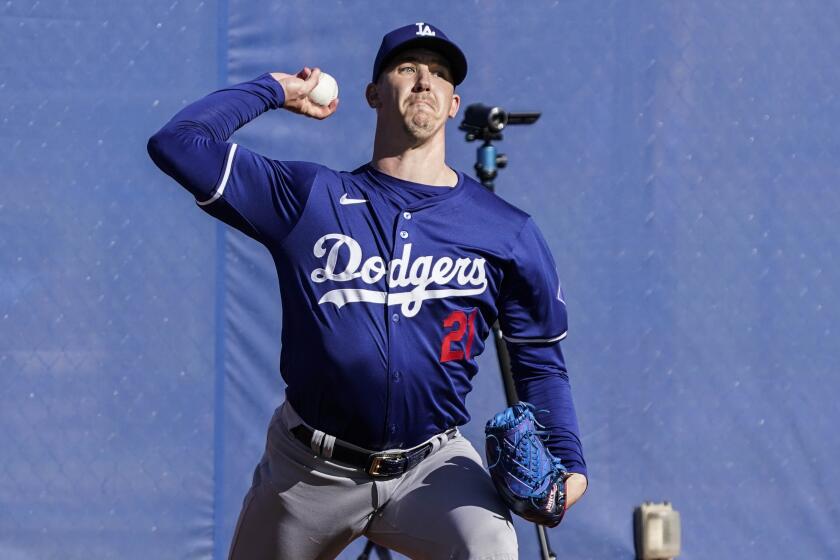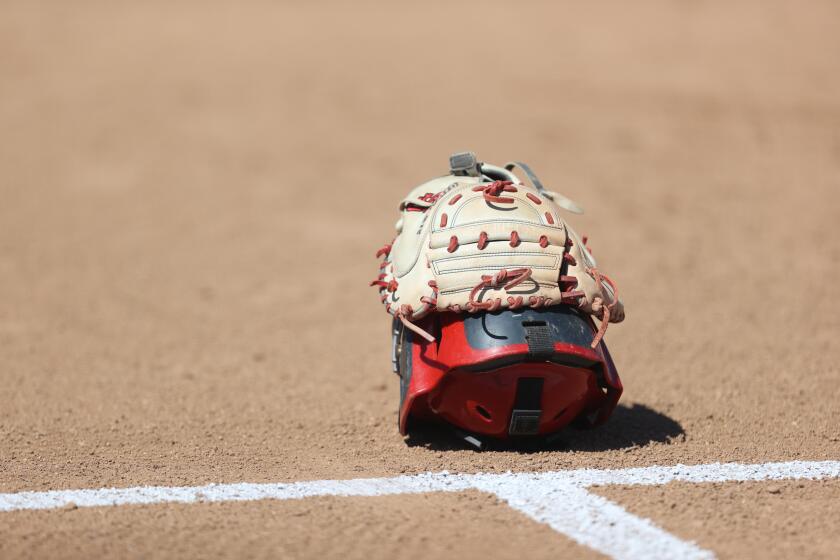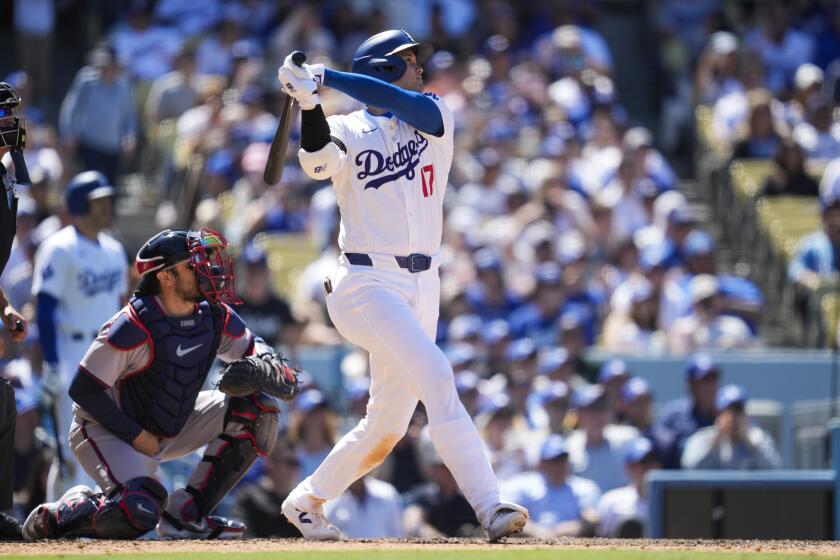Larry Jaster had the Dodgers’ number in 1966 and it was zero
It was no thanks to Larry Jaster that the Dodgers made a second consecutive trip to the World Series in 1966.
The rookie left-hander from the St. Louis Cardinals pitched five shutouts in 1966 — all, remarkably, against the National League champions.
So rare was the feat — shutting out an opponent five times in one season — that it hadn’t been done in 50 years and has not been duplicated in nearly 50 years since.
“The longer it went on,” Jaster says, “the more they were pressured to stop it, which worked in my favor. They were pressing and I kind of rolled along, thinking there was nothing to it.”
Granted, the Sandy Koufax-led Dodgers were not a great offensive team — they were shut out 17 times in 1966, not including three times in the Baltimore Orioles’ World Series sweep — but nobody overwhelmed them like Jaster.
“It was a combination of things,” Jaster, 67, says from his home in St. Johns, Fla. “I pitched well, I didn’t walk people. I had a good defense behind me, and I had some luck also.”
Actually, luck had little to do with Jaster’s dominance.
He gave up only 24 hits in 45 innings against the defending World Series champions, none for extra bases.
He struck out 31, walked eight.
And the Dodgers’ batting average against him was .157.
“Do I remember him?” former Dodgers first baseman Wes Parker says of Jaster. “Oh my God, do I remember him.”
Jaster “didn’t throw that hard,” Parker says of the Midland, Mich., native, “but he had a hop to his fastball. For some reason, it would soar a little bit, and he pitched us all up.
“None of us had real power … and he had the right concept: Just pitch us all up and let us hit the ball as hard as we wanted, knowing we couldn’t hit it out of those big ballparks.”
Jaster, the fifth starter in a rotation that included future Hall of Famers Bob Gibson and Steve Carlton, gave a hint of things to come in September 1965, pitching a 1-2-3 inning against the Dodgers at St. Louis in his major league debut.
The next time Maury Wills & Co. saw him, seven months later at Dodger Stadium, he gave up seven hits in a 2-0 decision over Claude Osteen, launching his shutout string.
After a stint in triple A, Jaster was back at Dodger Stadium 10 weeks later, outdueling Don Drysdale in a 2-0 victory.
Later in the summer, he outpitched Drysdale at Busch Stadium and again bested Osteen at Dodger Stadium.
The final shutout came in the season’s final week, the Dodgers trying to hold off the San Francisco Giants and Pittsburgh Pirates in a heated pennant race. Jaster gave up only four hits at St. Louis in a 2-0 decision over fellow rookie Don Sutton.
Consistently keeping the Dodgers off base, Jaster had stifled their ability to manufacture runs with their speed.
“He didn’t pitch us down where we could hit the ball and run — maybe find a hole in the infield, get on base and start stealing and running and all that,” says Parker, who went one for 12 against Jaster that season. “It was a great strategy. In fact, it was the same strategy basically that Baltimore used in the World Series against us. They must have studied his effectiveness.”
Jaster, finishing the season with an 11-5 record, matched a major league record that had most recently been equaled by Hall of Famer Grover Cleveland Alexander of the Philadelphia Phillies, who pitched five shutouts against the Cincinnati Reds in 1916.
“His wife actually sent me a letter congratulating me,” Jaster says of Alexander’s widow. “I have it in my closet.”
The southpaw carried his shutout string into the seventh inning of his next start against the Dodgers in April 1967, finally giving up a one-out sacrifice fly to Jeff Torborg in an 8-4 victory.
A velocity-sapping shoulder injury, however, prevented Jaster from delivering on the promise of 1966, when he finished fourth in voting for National League rookie of the year.
Though Jaster was 9-5 against the Dodgers, his 35-33 career record included only two other shutouts, the last a two-hitter against Tom Seaver and the New York Mets in May 1968. He was only 4-16 after developing a “frozen shoulder” later in ’68.
“I really wasn’t effective after that,” he says. “I could pitch without pain, but it wasn’t the same coming out of my hand. The life wasn’t there, the velocity wasn’t there.”
After giving up a grand slam to Jim Northrup of the Detroit Tigers in Game 6 of the 1968 World Series, Jaster was claimed by the Montreal Expos in the expansion draft. In 1969, he was the Expos’ starting pitcher in their first game at Montreal.
He made his last major league appearance in 1972, finished up in triple A and returned to school to get his degree, eventually earning a Masters in physical education at the University of New Mexico while also pursuing a coaching career.
A father of three, Jaster is a longtime minor league pitching coach now working in the Orioles organization.
Occasionally, he says, someone will ask him about his phenomenal success against the ’66 Dodgers.
“The more time goes on,” he says, “the more you think, ‘Man, I guess that was something different.’
“You get more and more proud of it.”
More to Read
Get our high school sports newsletter
Prep Rally is devoted to the SoCal high school sports experience, bringing you scores, stories and a behind-the-scenes look at what makes prep sports so popular.
You may occasionally receive promotional content from the Los Angeles Times.






